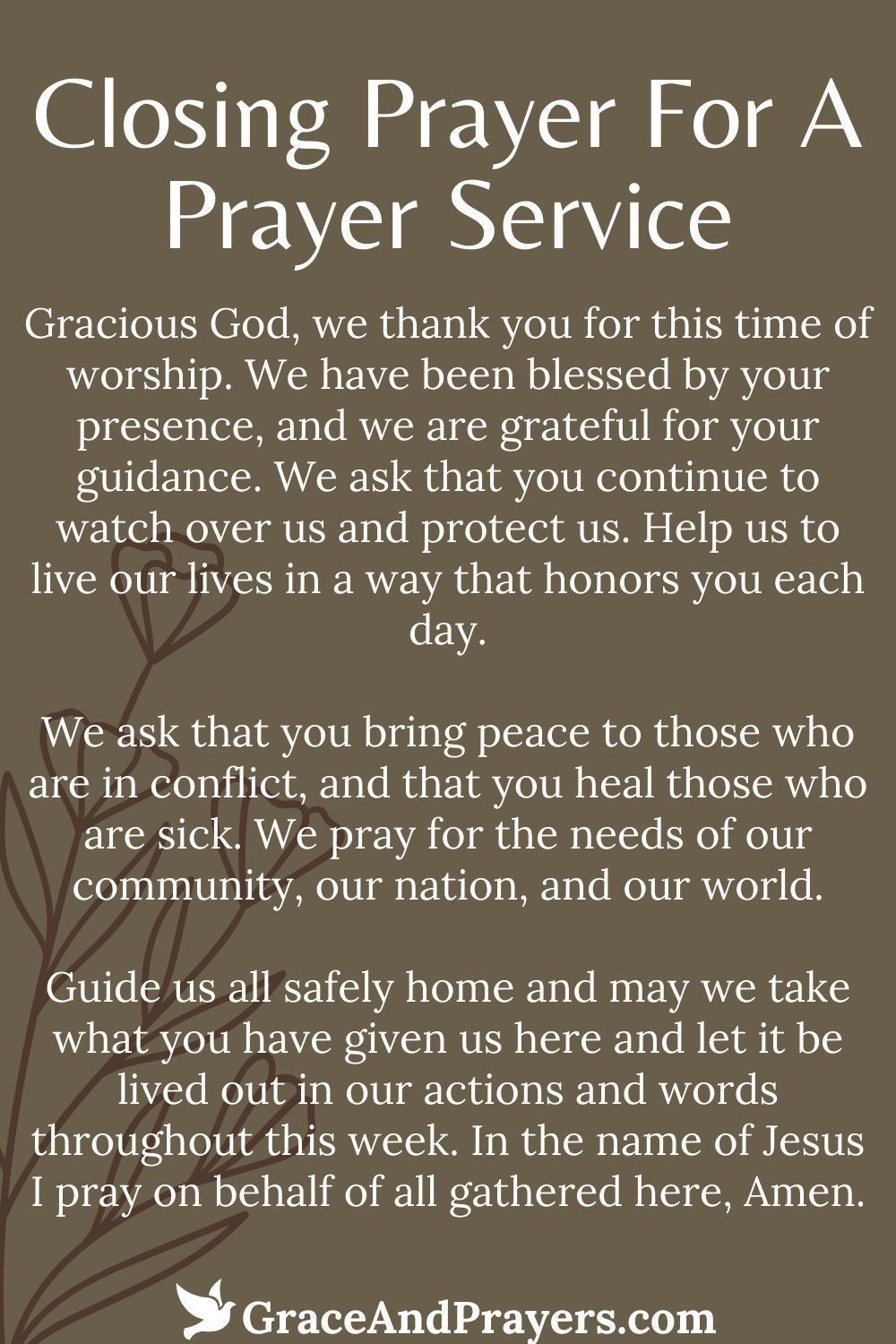In the grand tapestry of Christian worship, closing prayers for church services represent a profound and graceful conclusion to a sacred gathering. These prayers encapsulate the essence of fellowship, gratitude, and divine connection, engraining a lasting impression of reverence in the hearts of the congregation. Like a painter’s final brushstroke on a masterpiece, the closing prayer serves as the culmination of the collective worship experience, enabling believers to reflect on their shared journey.
As the service approaches its denouement, the air often fills with a palpable sense of anticipation. The congregation, having united in praise, hymnody, and supplication, is now invited to collectively surrender their thoughts, hopes, and burdens to the divine. The closing prayer becomes an opportunity to transition from the hallowed atmosphere of worship back into the world, akin to stepping out of a sacred sanctuary into the expansive, though sometimes tumultuous, domain of everyday life. This transition is not merely a logistical end but a spiritual metamorphosis.
To grasp the significance of closing prayers, one must first ponder their historical context. Traditionally, prayers at the end of services have served to encapsulate the messages delivered, remind congregants of their responsibilities as Christians, and invoke God’s guidance as they disperse. Echoing the ancient practice of the Jewish “Birkat Hamazon” or Grace after meals, they embody an ancient acknowledgment of gratitude, urging believers to express thankfulness for the blessings of fellowship and divine presence experienced during the service. This gratitude is not simply a polite acknowledgment; it is a heartfelt recognition of God’s grace woven through communal worship.
Furthermore, closing prayers offer a unique moment for introspection. As the concluding rites unfold, congregants are encouraged to reflect upon the messages imparted throughout the service. The closing prayer is an invitation to consider how these teachings can be carried forth into daily lives. Like seeds scattered upon fertile ground, these words of prayer germinate within individual hearts, prompting actions of kindness, service, and love in the world beyond the church walls.
Another distinctive feature of closing prayers is their capacity to forge unity among diverse congregations. Each individual arrives with unique experiences, burdens, and aspirations. However, in the echoing silence that precedes a closing prayer, there is a profound collective spirit that governs the congregation. Just as a symphony concludes with a harmonious resolution, the closing prayer weaves together the myriad threads of individual journeys into a single tapestry of faith. This unity transcends personal trials, reminding everyone of their shared identity as members of the body of Christ.
One might consider the imagery of sailing towards home—a fitting metaphor for the journey facilitated by a closing prayer. Just as sailors gather their sails, adjust their heading, and prepare to navigate back to their port after an expansive voyage, congregants are directed to return to their lives with renewed purpose and spiritual fortitude. The closing prayer is the gentle breeze that sets the course; it is the assurance that, despite the tempests of life, they have a steadfast harbor in God’s love.
In crafting a closing prayer, the pastor or spiritual leader often draws upon profound themes: serenity, protection, and enlightenment. The prayer might encompass petitions for strength to face forthcoming challenges, gratitude for the fellowship experienced, and a request for continual guidance as congregants continue their spiritual odyssey. These themes can resonate deeply, evoking sacred images within the hearts of the listeners. Each phrase punctuates the profound relationship between the individual believer and their Creator, anchoring them in the assurance of divine presence.
Moreover, the language used in closing prayers can vary significantly—many choose a more contemporary, relatable vernacular, while others may opt for a more traditional lexicon steeped in centuries of Christian heritage. Regardless of style, the core message remains: a charge to live out one’s faith authentically in the world. The juxtaposition of the sacred and the mundane is beautifully articulated through the closing prayer, illuminating the divine that intertwines with daily existence.
As the closing prayer unfurls, it often culminates in an “Amen,” a word rich in meaning that seals the collective petition with consensus and fervor. This simple utterance embodies the affirmation of faith; it echoes the collective heartbeat of the congregation. In this moment, hearts resonate with a shared commitment to uphold the teachings of Christ in their actions, relationships, and communities. It signifies an intentional turning towards a life imbued with purpose, echoing the call to be “salt and light” in the world, as articulated in Matthew 5:13-16.
In conclusion, closing prayers for church services are not merely formalities; they are vital components of the Christian worship experience. They serve as graceful endings that encapsulate a shared journey of faith, foster unity amongst believers, and set the stage for spiritual missions beyond the sanctuary. Through the lens of gratitude, these prayers invite congregants to embrace the profound mystery of faith, recognizing that their worship is but a precursor to the divine life they are called to lead. As the gathered community disperses, each member carries the ember of collective worship, igniting their unique paths with a renewed sense of purpose and an unwavering spirit enriched by grace.



